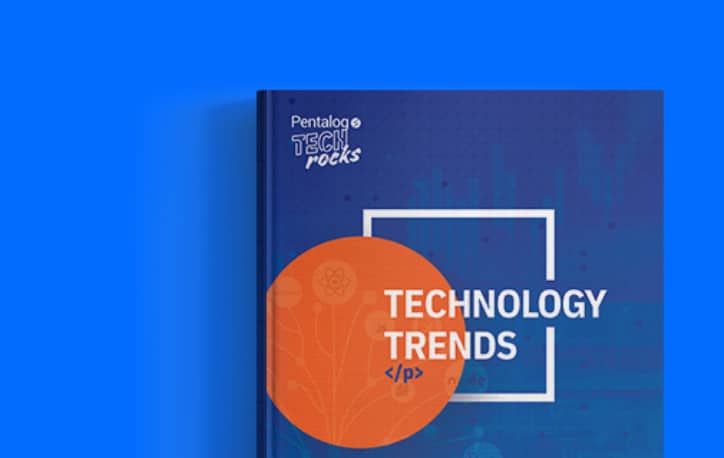Truth You Can Trace – Not Just Trust
“Trusted data” is a goal many data platforms claim (and aim) to deliver – and Syniti is no exception. With a strong legacy in ERP migration and master data governance, Syniti helps large enterprises align people, processes, and policies through its Syniti Knowledge Platform (SKP).
But in practice, trust without transparency is often not enough. It can leave business users in the dark – and even fail the very decisions it’s meant to support.
If you’re evaluating a Syniti alternative for business-friendly data matching, this is where the distinction becomes important.
Syniti’s data matching engine operates within SKP workflows and relies on technical users or services teams to manage matching logic. Business users often lack visibility into how scores are calculated or why records matched.
That’s where Data Ladder is different.
Instead of treating data quality as a downstream output of governance, Data Ladder puts transparent, high accuracy matching into the hands of users. Its data quality software, DataMatch Enterprise (DME), is purpose-built for fast, explainable, and accurate entity resolution across CRMs, ERPs, spreadsheets, and APIs.

With DME, business users can see exactly why a match occurred, how it was scored, and how to fine-tune results – all without writing even a single line of code. Its deployment is fast, and integration into existing systems is seamless, making it a great Syniti alternative for operational teams that need more transparency and control without complexity.
This Data Ladder vs. Syniti comparison explores where the two tools diverge – not in features, but in how they handle execution, transparency, and operational confidence.
Syniti vs. Data Ladder: Strategic Decision Matrix – At a Glance
| Key Factor | Syniti (SKP) | Data Ladder (DME) |
| Primary Purpose | Data transformation, governance, ERP migration, and MDM for large enterprises. | Fast, accurate data profiling, record matching, cleansing, and deduplication across sources. |
| Deployment Time | Long; typically weeks to months; service-led with governance alignment. | Deploy in hours, usable same day; self-service or guided setup. |
| Best Fit For | Organizations executing large or complex SAP/ERP transformations, centralizing governance and MDM workflows. | Teams needing fast, auditable data matching and deduplication. Ideal for teams seeking a lightweight Syniti replacement for data cleansing and matching. |
| Governance Dependency | High – matching is embedded in SKP governance workflows. | None – runs independently or alongside existing infrastructure. |
| Data Matching Capabilities | Available within SKP workflows, not standalone. | Core strength: fuzzy, phonetic, numeric, exact, and domain-specific matching. |
| Usability | Requires platform knowledge or training; typically IT- or consultant-led. | Business user-friendly GUI with visual rule configuration, real-time preview. |
| License Structure & TCO | Enterprise licensing; TCO for Syniti varies with scope and services. | Fixed license; transparent pricing; significantly lower cost of ownership. |
| Time to First Value | Weeks to months depending on scope and service involvement. | Minutes to hours (import, match, validate, export immediately). |
Execution Risk: Who’s Really in Control?
| Dimension | Syniti (SKP) | Data Ladder (DME) |
| User Involvement | Consultant-led; workflows often managed by governance or IT teams. | Business users can run matching jobs independently with little to no IT support. |
| Logic Transparency | Matching logic often embedded in transformation rules or hidden behind platform workflows. | All logic is visual, adjustable, and transparent – with real-time previews and full traceability. |
| Iteration Speed | Slower; changes involve coordinated QA, approvals, and workflow rework. | Rapid – adjust rules, test, preview matches, and tune results in a single session. |
| Governance Dependencies | Designed to align with governance models, not bypass them; matching happens inside governed SKP processes. | None. Designed to work independently or complement existing governance programs – no dependency on metadata models or transformation orchestration. |
| Execution Risk | Higher – if configurations are off or transformations misfire, business impact is delayed. Errors can take time to surface. | Lower – full control over match behavior, real-time validation. Users see exactly what happens and can adjust rules immediately. |
Syniti’s approach assumes long-term governance maturity and centralized coordination. Data Ladder assumes you need to fix something now – and gives you the tools to do it with full visibility and control. It’s a great alternative to Syniti when speed, transparency, and precision all matter equally.
Truth in Matching: Clarity Over Confidence
It’s one thing to match records, it’s another to prove that the matches are correct – to auditors, regulators, stakeholders, or skeptical executives.
| Matching Element | Syniti (SKP) | Data Ladder (DME) |
| Match Methods | Primarily rule-based within services-defined workflows; no standalone matching module. | Phonetic, fuzzy, numeric, exact, and domain-specific rules – all configurable without coding. |
| Auditability | Match rationale can be hard to trace without deep platform knowledge; logic is dispersed across services, workflows, and metadata. | Every rule, weight, and result is logged, reviewable, and adjustable. |
| Explainability for Business Users | Typically requires technical interpretation. | Visual match builder with real-time feedback and human-readable scoring and rule logic. |
| False Positives/Negatives | May be hard to detect without structured QA cycles. | Easy to preview, validate, and tune matching thresholds in real time. |
| Transparency | Match logic embedded in complex workflows; rules may span multiple components. Visibility varies. | 100% transparent: users can see and validate each match scenario. |
Explainability might be a luxury or nice-to-have for some, but in industries like healthcare, insurance, and finance, it’s mandatory. Syniti focuses on governance-aligned data quality at the metadata level, but Data Ladder delivers it at the match-result level, where business decisions actually happen. DME focuses on in-the-moment clarity, helping users prove, trust, and act on match results with full confidence.
Operational Fit: Do You Need a Program – or a Product?
| Use Case | Syniti (SKP) | Data Ladder (DME) |
| ERP Migration | Deep planning and services layer; may require full data transformation. | Lightweight, visual match/merge that complements migration. Works alongside or instead of SKP tools to clean data pre-migration. |
| One-Off Data Cleanup | Too heavy for small projects or one-off needs. | Perfect Syniti alternative for one-off projects – offers quick, visual deduplication and export. No technical setup required. |
| 3rd-Party Data Matching | Data imports are possible but typically require governance context and workflow setup. | Plug-and-play setup; connects to diverse sources, including Excel, CSV, SQL, databases, and APIs. |
| Ongoing Match Jobs in Pipelines | Possible, but usually as part of broader Syniti Knowledge Platform – with workflow configuration. | Built-in automation, scheduling, and API support for pipelines. |
| Non-Technical User Involvement | Limited – mostly administrator- or consultant-driven. | Central – non-technical users can configure, preview, and validate. |
Syniti may be a strong choice when you’re launching a multi-year data governance program. Data Ladder is ideal when you need answers this quarter or this week. If you’re looking for a faster Syniti alternative for data matching and cleansing, Data Ladder is your best bet.
Data Ladder vs. Syniti: Real-World Scenarios – Who Wins Where?
| Scenario | Syniti (SKP) | Data Ladder (DME) |
| Cleaning customer records pre-campaign | Requires platform configuration, transformation rules, and stewardship approval. | Load/import, match, preview, export — all in a single session. |
| Merging two Salesforce orgs | Full project cycle: mapping, rules, stewardship, QA. | Plug in records, apply match rules, review edge cases visually. |
| Healthcare data deduplication | Can support but may require custom rule writing and workflows. | Built-in fuzzy logic for name, ID, DOB – highly tunable, no coding needed. |
| Vendor list cleanup | Not an ideal use case. | Simple and fast: dedupe across multiple attributes in minutes. Perfect Syniti alternative for fast list cleanups. |
Final Word: Do You Need Focused Matching or Full Governance?
Syniti offers a comprehensive data governance and MDM platform. Its strength lies in enabling large-scale SAP and ERP transformations and long-term stewardship. For teams managing large, complex enterprise programs, it delivers structure, metadata lineage, and governance at scale.
However, when you need clean, usable, verifiable data – now – then Data Ladder is the better Syniti alternative for business users and agile teams. It puts match logic in plain sight, lets business users stay in control, and helps you fix data issues fast without losing transparency or waiting a project plan.

Ready to replace Syniti for data matching and cleansing?
Download a free data matching software trial or book a live personalized demo with our expert to see how Data Ladder gets your data right – without the risk, drag, or delay.
Frequently Asked Questions
1. What is the best Syniti alternative for data matching and deduplication?
For teams prioritizing transparency, speed, and ease of use, Data Ladder is one of the best Syniti alternatives available. If offers fast deployment, no-code matching, and clear scoring logic with real-time previews and full transparency for business users.
2. Is Data Ladder a good Syniti replacement for ERP data cleanup and migration prep?
Yes. While Syniti is a strong tool for full ERP transformation programs, Data Ladder’s matching software DataMatch Enterprise is a powerful Syniti replacement for upfront data preparation – such as cleaning, matching, and deduplicating records before migration. It integrates easily with ERP systems, accelerates timelines, and ensures cleaner cutover with less effort.
3. Does Data Ladder offer better transparency than Syniti?
Absolutely. All matching logic in Data Ladder is visual, explainable, and adjustable by business users, unlike Syniti where it may be embedded within workflows or services. Data Ladder also offers human-readable explanations for match rules and real-time previews. That means you don’t just trust the match; you can also prove it, adjust it, and explain it.
If your use case demands a more transparent data matching alternative to Syniti, Data Ladder is a top pick.
4. Can Data Ladder be used for real-time matching workflows?
Yes. DataMatch Enterprise includes full API support for real-time or scheduled matching in active data pipelines, making it a lightweight but powerful Syniti replacement for execution-heavy jobs.





































